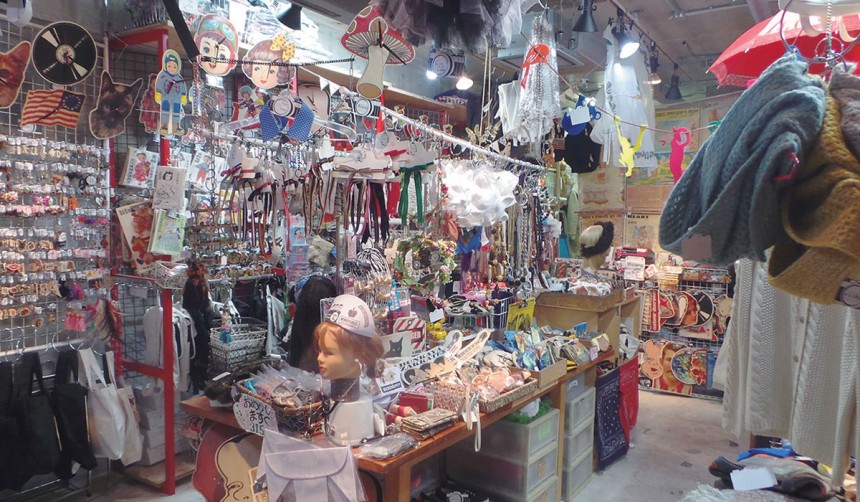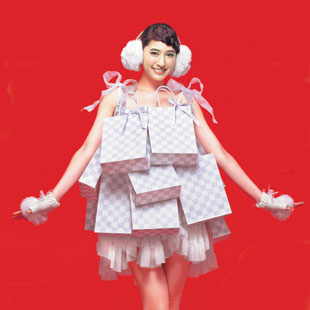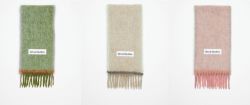
Christmas Day may have come and gone, but those of you whose greed has yet to be sated are well catered for in the impending series of sales set to continue from the first day of the new year to the end of January. No matter how much you may have been lucky enough to receive in your bonus or otoshidama, some planning is required to get the most out of the hatsu-uri sales, so keep your ear to the ground—or, failing that, your favorite brand’s Twitter.
This jaded fashion fan’s advice is to hold off on your sale shopping for as long as you possibly can. The best bargains come when shops are seriously desperate to clear their shelves, so unless a 30 percent discount is enough to leave the comfort of your kotatsu for, I would hold off until the end of the month.

(Photo by Samuel Thomas)
Street Focus
One of the core characteristics of Japanese street fashion is the emphasis on layering, with many fashion fans refusing to wear a single layer—say, just a T-shirt—even in the height of summer. Mercifully, the winter season doesn’t just make this a matter of fashion but one of necessity. Follow the lead of today’s subject and go layering crazy; just ensure each layer is visible at any given time to ensure you don’t look too bulky.
On Point
The new year heralds the end of Harajuku fashion legend Bunkaya Zakkaten, the iconic purveyor of fashion accessories and oddities that has been fueling the city’s street scene for the past 40 years. Beloved by stylists looking to add spice to a photo shoot, as well as bargain-hunting tourists looking to take a piece of Harajuku home, the store is a true institution responsible for an endless stream of trends, all in their distinctive faux-turn-of-the-century, vintage aesthetic. Mercifully, for the Harajuku scene, the shop’s departure isn’t due to the rise of fakes that has chased off a couple key players, most recently legwear line Avantgarde. Nor is it due to a downturn in the local fashion economy. The fade to black is simply the manager Yoshitaro Hasegawa wanting to sign off on a successful career. Marking his exit from the fashion scene, Yoshitaro is publishing a book chronicling the history of the shop and the streets of Harajuku, which is a must-read for contemporary street fashion fans who want to see where it all began.

Shopping Strategy
Lucky packs or fukubukuro are a popular peculiarity of the Japanese retail landscape, offering faithful customers of a brand or shop the chance to buy a bag filled with random items at a substantial discount. The custom, which in its current form was instigated by Ginza Matsuya Department Store in the late Meiji period (but actually extends far back into Edo-era Japan) is primarily a useful way for a shop to clear its racks.
However, if the customer’s luck holds, some bags are genuinely like winning the lottery, containing items that far outstrip the price of the pack tenfold.
In the case of fashion, the fukubukuro of popular brands are often sold-out on pre-order months in advance, and in a bizarre twist, popular brands have actually started to make new items specifically to satisfy the demand for lucky bag hunters.
Beyond that, some labels pepper their packs with items exclusive to that season’s fukubukuro—or else, run it like a true lottery by throwing a one-off item into the mix as a prize for one lucky, loyal fan.





